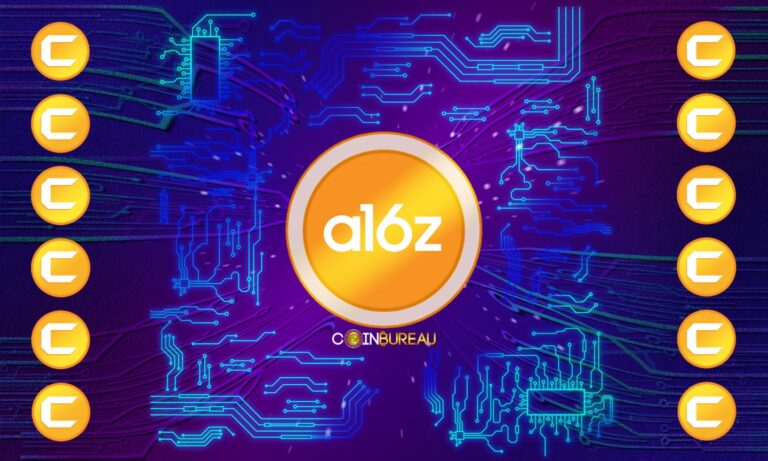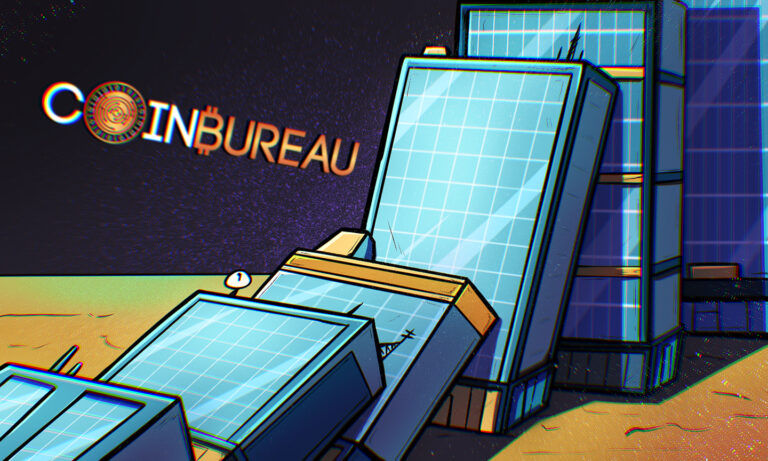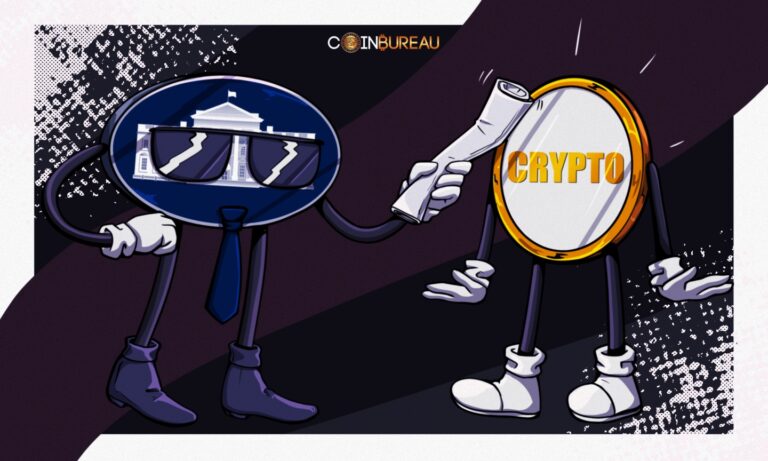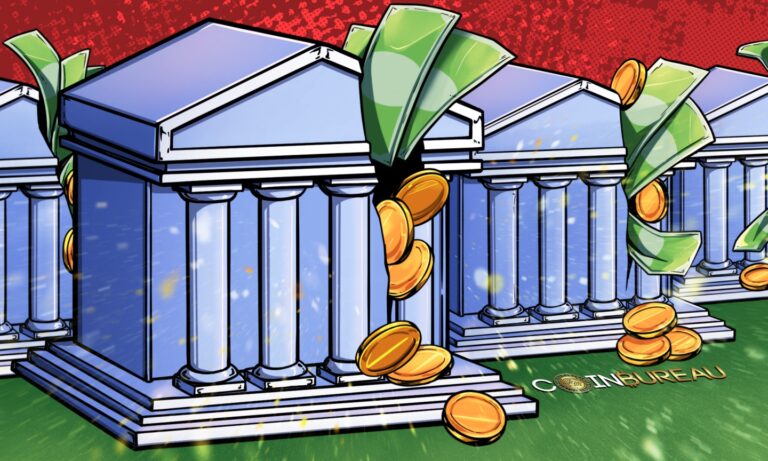It’s one of the biggest mistakes a crypto investor can make: not appreciating a project’s fully diluted market cap (FDV). Those coins or tokens whose market caps might suggest they have a lot of potential can sometimes be a trap. That’s because a project often has the bulk of its tokens locked up in vesting contracts. Tokens which will eventually be released.
When this happens, it’s most often the unsuspecting retail investor who is dumped on and used as ‘exit liquidity.’
That’s why it’s incredibly important to study a project’s vesting schedule, as it’s likely to give clues as to future price performance. And, that is exactly what the team at Token Unblocks have done in their recent token vesting report.
It’s a comprehensive analysis of the types of token vesting schedules and smart contracts. They have analysed a number of different projects that have had tokens vested out and studied what impact this has had on price.
It’s an incredibly insightful report, which I have dutifully summarised for you today. You can watch that video here.
📊 My Personal Portfolio 📊
USDC 37.23% | ETH 28.35% | BTC 27.79% | ATOM 4.85% | DOT 1.73%
📈 Guy’s Forward Guidance 📈
Last week was wild, and I’ll explain exactly why that was the case in tomorrow’s weekly crypto news review. For now though, I want to tackle an even more important question: will the bullish momentum continue for the next seven days? The answer depends on which indicators you’re looking at. Technical analysis doesn’t seem to be cutting it, as the headlines have shown. CoinDesk says there is a golden cross on the daily. CoinTelegraph says death cross on the weekly.
This leaves us with the fundamentals. The core fundamental in cryptocurrency is market liquidity – the literal amount of money in the markets. People forget that BTC doesn’t protect against high prices – it protects against money-driven inflation. Funnily enough, the analysis is mixed there too. On the one hand, the US Treasury Department is pumping money into the economy. On the other hand, the Fed’s reverse repo facility is sucking money out of it.
Okay, but what about macro factors? The primary macro factor is central banks raising interest rates to fight inflation. Raising interest rates makes it harder to borrow and makes existing debts more expensive = markets go down (basically). Chairman Powell was oddly dovish during the Fed’s press conference, after announcing a mere 0.25% raise. Meanwhile the European Central Bank and the Bank of England doubled down with a 0.5% raise. Hmm…
This leaves us with good old crypto-specific factors, and the one that’s been making the rounds over the last few days is the DOJ’s investigation into Silvergate over its FTX and Alameda connections. Silvergate is a crypto bank which provides services to the who’s who of the industry, including Coinbase and Circle. Silvergate’s stock has since regained its DOJ-related losses, presumably because Blackrock increased its investment in the bank. Yikes.
In case that didn’t make it clear enough, nothing makes sense in the crypto market right now. I suspect this has to do with the fact that institutional investors seem to have their hands firmly on the wheel. Then again, JP Morgan says that most institutions aren’t that involved at the moment either. That said, it doesn’t take much money to move the crypto market up and down these days. The absence of retail interest suggests it must be the institutions.
The only alternative explanation is that we’re seeing crypto market manipulation by entities within the industry itself. This wouldn’t be that surprising, given that there appears to be evidence of this kind of stuff happening. What is surprising is that there’s speculation that A-list exchanges are involved in this peculiar phenomenon. Make no mistake, we will not see a sustained bull market until these shenanigans have been sorted out, and that has yet to happen.
💵 What Crypto needs to “Buidl” 💵
The explicit and implicit purpose of crypto is to create the technologies required to replace the centrally-controlled financial system with a decentralised alternative that can’t be controlled. If this sounds hard, that’s because it is. Replacing the existing financial system isn’t going to be easy, but crypto is slowly getting there. Bitcoin’s BTC is slowly becoming a decentralised store of value, but it’s just one of many innovations crypto needs to succeed.
The second innovation is one many of you are familiar with, and that’s standard decentralised finance or DeFi. DeFi itself has advanced significantly, but unfortunately its core components have only become more centralised. If all of DeFi is using centralised stablecoins for liquidity, centrally issued IDs for reputation, a centralised governance structure and running centralised internet infrastructure, then – guess what – it is not truly decentralised.
This brings me to the other four innovations. The third innovation required is a truly decentralised currency. Call me crazy, but paying for everything with a store of value makes no sense in the long run. Issues also arise when you have a currency with a fixed or constrained supply. Centralised stablecoins are trying to become a decentralised currency, but that won’t replace anything in TradFi. A robust decentralised stablecoin is required, and it will come eventually.
The fourth innovation is likewise getting significant attention these days, and that’s truly decentralised digital ID. Make no mistake, having to complete KYC using a government-issued ID to get some custom NFT is not decentralised in any way. It’s literally a digital ID stablecoin with the same concerning qualities. A robust decentralised ID is required – one that isn’t issued by governments, but is seen as having the same validity. That will take time.
The fifth innovation stems from the fourth, and that’s a truly decentralised autonomous organisation or DAO. Most DAOs are replicating the same centralisation we see in existing governance structures (as seen here). Creating a truly decentralised DAO requires creating a new governance structure that’s neither democratic nor dictatorial. Without this innovation, the entire crypto ecosystem will eventually centralise and become another TradFi.
The sixth and final innovation required will be the most difficult to develop, and that’s decentralised infrastructure, specifically decentralised internet networks. Even if the other five other innovations are achieved, being on a centralised internet risks having the rug pulled out from under everything. The people in power will do everything to ensure that the former five innovations are not achieved. That’s why I really hope we don’t all end up on Starlink.
🔐 NFT Refunds 🔐
Last week, German luxury car manufacturer Porsche launched its car-themed NFT collection at a mint price of 0.911 ETH. To say the launch made headlines would be an understatement. However, it’s probably not for the reasons Porsche intended.
The Porsche NFT launch was a dismal failure, with only 2,363 NFTs being minted out of the originally planned total supply of 7,500. The team was forced to halt the minting process, adjust the total supply due to the low demand, and deal with a wave of complaints from fans after the floor price for the NFTs dipped below their mint price.
However, despite this motorway pileup of a launch, there was one unique detail in Porsche’s minting process that I think deserves some attention. I dare say it could even potentially change the way projects sell their NFTs in the future.
What was it?
A tiny disclaimer checkbox right above the ‘Mint’ button.
This checkbox informed purchasers that they were going to lose their ‘right of withdrawal’ if they decided to mint the NFTs. If you’re wondering what a ‘right of withdrawal’ is, it’s an EU and UK consumer right that requires any person or business engaged in ‘distance selling’ (aka the opposite of physically selling products), to provide purchasers with a 14-day period in which they can return goods and request a full refund for any reason whatsoever.
TLDR: it’s best understood as a statutory 14-day return policy for online purchases.
Imagine that. A return policy on NFTs.
I wonder if the legal team at Porsche could see the future because that tiny checkbox just saved the project from being liable for any refund request. Though, to be fair, the concept of seeking a refund on an NFT never crossed my mind until I came across this tweet by Paul Price.
Paul, who is based in London, has now taken this to the next level by emailing Yuga Labs to ask them for a refund on his Otherdeed NFT that he purchased almost a year ago. Wait though… isn’t it only a 14-day return period?
Well, according to the law, if the online seller fails to inform purchasers of their right of withdrawal, the return period is extended by 12 months. So, Paul is well within the period to exercise his right of withdrawal. Though, as others have pointed out in the comments, this is subject to the interpretation of some other considerations under the law. The definitive answer to which, in my opinion, can only be decided by a court.
Browsing the comments, the top argument against the applicability of the ‘right of withdrawal’ to NFTs seems to be the ‘price fluctuation’ exception provided under the law.
The price fluctuation exception, present only in the EU legislation, limits the right of withdrawal from applying to ‘goods or services’ whose price is dependent on fluctuations in the financial market. At first glance, this seems to fit perfectly with how NFTs are traded in the secondary market.
However, this requires answering the question of whether NFTs are even considered ‘goods’ in the first place. Moreover, the right of withdrawal applies to trades between the professional (the NFT project who is the original seller) and the consumer (NFT minters). Would it also be applicable for trades between two consumers?
Food for thought.
With the recent focus on crypto regulation, questions on the applicability of distance selling regulations could be addressed sooner than we think.
🔥 Deal of The Week 🔥
When it comes to centralised exchanges, the past year has shown us that no matter how secure you think an exchange is, nothing beats verifiable on-chain proof of reserves. A handful of exchanges have published these, including Bitget. This exchange has recently seen explosive growth as traders favour its slick interface, altcoin support and low trading fees.
If you have been on the lookout for a new exchange, then you may want to consider Bitget. Even better, the Coin Bureau team has been able to get you a special deal that gives you an exclusive 60% trading fee discount, a bonus up to $8,000 & $20 FREE!
👉 Sign up to Bitget & get a 60% fee discount, up to $8k bonus & $20 FREE!
Want to do a bit more DD on Bitget? Read our in depth Bitget review!
⚠️ NB: As is the case with any crypto exchange (proof of reserves or not), it is always best practice to keep the bulk of your crypto on a hardware wallet.
🔮 Video Pipeline 🔮
- MetaMask Guide 101: How to Defi Safely!
- FED Press Conference Summary: What it means for you!
- Top 5 Crypto Exchanges For 2023: Which is Best?
- UK Crypto Regulations: Time to panic?
- Deepfake Warfare Report: A new frontier?
🏆 What's New At CoinBureau.com This Week? 🏆
✅ OKX Loans Review 2023: Crypto Loans Made Easy!✅ 5 Top NEAR Protocol Projects 2023: (NEAR dApps to Watch!)
That’s it for this newsletter. The entire Coin Bureau team would like to thank you for your continuing support of our mission to power mass adoption of crypto, one person at a time 🙏
Guy your crypto guyDisclosure: Authors may own cryptoassets named in this newsletter. These are unqualified opinions, and a Coin Bureau newsletter, is meant for informational purposes only. It is not meant to serve as investment advice. Please consult with your investment, tax, or legal advisor.














